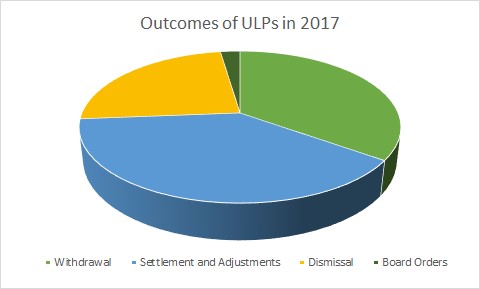A February 21, 2023, decision by the National Labor Relations Board found it unlawful for employers to include some routine provisions in severance agreements. NLRB General Counsel Jennifer Abruzzo issued a memorandum dated March 22, 2023, elaborating on her broad interpretation of the ruling. Consequently, employers may now face federal labor law claims if they even offer a severance agreement to an employee that includes previously common restrictions.
McClaren Macomb Decision
In McClaren Macomb, 372 NLRB No. 58, the NLRB found that a hospital committed an unfair labor practice in violation of the National Labor Relations Act merely by offering a severance agreement to 11 permanently furloughed employees. The NLRB deemed the proposed agreements unlawful because they contained these non-disclosure and non-disparagement provisions:
- “Confidentiality Agreement. The Employee acknowledges that the terms of this Agreement are confidential and agrees not to disclose them to any third person, other than spouse, or as necessary to professional advisors for the purposes of obtaining legal counsel or tax advice, or unless legally compelled to do so by a court or administrative agency of competent jurisdiction.”
- “Non-Disclosure. At all times hereafter, the Employee promises and agrees not to disclose information, knowledge or materials of a confidential, privileged, or proprietary nature of which the Employee has or had knowledge of, or involvement with, by reason of the Employee’s employment. At all times, hereafter, the Employee agrees not to make statements to Employer’s employees or to the general public which could disparage or harm the image of Employer, its parent and affiliated entities and their officers, directors, employees, agents and representatives.
The severance agreement also identified penalties if the employee violated those provisions, including paying the employer’s attorneys fees.
The Board held that these provisions unlawfully interfere with employees’ exercise of rights protected by Section 7 of the NLRA. Section 7 rights include protection for employees engaging in concerted activity for their mutual aid and protection. The NLRB emphasized that just offering the agreement was unlawful even though the employees didn’t sign it and thus didn’t become bound by its terms.
General Counsel Memorandum 23-05
General Counsel Abruzzo has already established through earlier actions and memorandums that she has extremely pro-labor views of the NLRA. She demonstrated these sentiments again through this memorandum elaborating on the Board’s McClaren Macomb decision. Though not formally binding, the GC’s memo establishes her prosecutorial viewpoint and puts employers on notice that she will challenge a broad array of severance agreement provisions.
Here are summarized versions GC Abruzzo’s answers to the following questions:
Are severance agreements now banned?
No, as long as they’re limited to a release of the signing employee’s employment claims arising before the date of the agreement. But once seemingly any of the various other common components of severance agreements are added, her view shifts.
Do the circumstances surrounding the severance offer matter?
Probably not, as “an employer can have no legitimate interest in maintaining a facially unlawful provision in a severance agreement.”
What if the employee doesn’t sign the agreement?
As the Board held, it doesn’t matter. “[T]he proffer itself inherently coerces employees by conditioning severance benefits on the waiver of statutory rights such as the right to engage in future protected concerted activities and the right to file or assist in the investigation and prosecution of charges with the Board.”
What about severance agreements offered to supervisors?
Even these may be unlawful. Typically, the NLRA doesn’t protect “supervisors,” as defined by the law. However, the GC still has a (highly dubious) theory of how offering a severance agreement with prohibited language to a supervisor nonetheless constitutes an unfair labor practice.
How does this affect severance agreements before the February 2023 McClaren Macomb decision?
They could also be challenged. The GC even suggests she could prosecute back beyond the standard 6-month NLRA statute of limitations where the severance agreement provisions have ongoing effect. She notes that the NLRB has “settled cases involving severance agreements which had unlawfully broad terms that chilled the exercise of Section 7 rights by requiring the employer to notify its former employees that the overbroad provisions in their severance agreements no longer applied.” But she does not guarantee that would be the extent of the potential penalties.
Would the entire severance agreement be null and void due to just one overbroad provision?
It depends. The GC suggests the NLRB “generally make[s] decisions based solely on the unlawful provisions and would seek to have those voided out as opposed to the entire agreement, regardless of whether there is a severability clause or not”. She further offers that “while it may not cure a technical violation of an unlawful proffer, employers should consider remedying such violations now by contacting employees subject to severance agreements with overly broad provisions and advising them that the provisions are null and void and that they will not seek to enforce the agreements or pursue any penalties, monetary or otherwise, for breaches of those unlawful provisions.”
Why does the NLRA protect former employees in this situation?
Good question. Because the Board said so. But the GC adds, “In addition, former employees can play an important role in providing evidence to the NLRB and otherwise sharing information about the working conditions they experienced, in a way that constitutes both mutual aid and protection.”
Can the NLRB come between private contracting parties?
Yes, though the General Counsel doesn’t really answer that. Instead, she shifts the focus to the Board’s role “to address the inequality of bargaining power between employees, who do not possess full freedom of association or actual liberty of contract, and their employers . . . .”
What if employees request broad confidentiality or non-disparagement clauses?
They can ask, but the employer can’t provide it. Per the GC, “In that unlikely scenario, I would reiterate that the Board protects public rights that cannot be waived in a manner that prevents future exercise of those rights regardless of who initially raised the issue.” She also notes that unions could not waive these rights on behalf of employees.
What about other forms of employer-employee communications?
Pre-employment agreements or offer letters could be unlawful on the same theories as severance agreements.
Could any confidentiality provision in a severance agreement be lawful?
Yes, but not really. “Confidentiality clauses that are narrowly-tailored to restrict the dissemination of proprietary or trade secret information for a period of time based on legitimate business justifications may be considered lawful.” Such restrictions were likely already in place before the severance agreement, which may only be restating them for clarification/reiteration. The typical purpose of a confidentiality agreement in a severance agreement, especially if used to settle a pending claim, is to prevent public dissemination of information related to the employee’s potential claims against the employer. Any such restrictions would now likely violate McClaren Macomb.
Could any non-disparagement provision in a severance agreement be lawful?
Yes, but not really. “[A] narrowly-tailored, justified, non-disparagement provision that is limited to employee statements about the employer that meet the definition of defamation as being maliciously untrue, such that they are made with knowledge of their falsity or with reckless disregard for their truth or falsity, may be found lawful.” That is a non-defamation provision, not a non-disparagement provision. And state laws already protect against defamation, so there’s probably not much to be gained by putting such a clause in a severance agreement–especially at risk that the GC will somehow still find it’s overbroad.
Would a savings clause or disclaimer save overbroad provisions in a severance agreement?
Probably not. The General Counsel might be somewhat persuaded by a very extensive recitation of all possible rights protected by the NLRA and clear language that no such rights are being limited. However, there’s no guarantee that will help, and it’s unlikely many employers would be interested in taking that approach.
Does the GC view any other common severance agreement provisions as problematic?
Yes, of course. In particular, she points to non-compete clauses; no solicitation clauses; no-poaching clauses; broad liability releases and covenants not to sue; and cooperation requirements. There’s hope some of these might be acceptable in some situations, but employers proceed at their own risk.
Employer Response
What does all of this mean? Private companies in the U.S. have reason to fear that the NLRB will object to the severance agreements they’ve regularly used in the past. The same legal issues likely apply to settlement agreements used to resolve pending lawsuits and administrative proceedings.
If you use severance agreements with your separating employees, you should review them and reconsider your approach given these new pronouncements. However, that doesn’t necessarily mean every employer should adopt new agreements that don’t include confidentiality, non-disparagement, and other potentially challengeable provisions. NLRB rulings are not final, and there may be court challenges to the theories applied in McClaren Macomb and by the General Counsel. But it is critical to carefully weigh the risks and rewards of various approaches with the assistance of experienced labor counsel.
For more employment law updates, sign up for the Horton Law email newsletter and follow us on LinkedIn.




You must be logged in to post a comment.